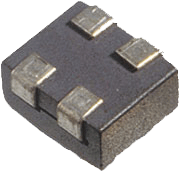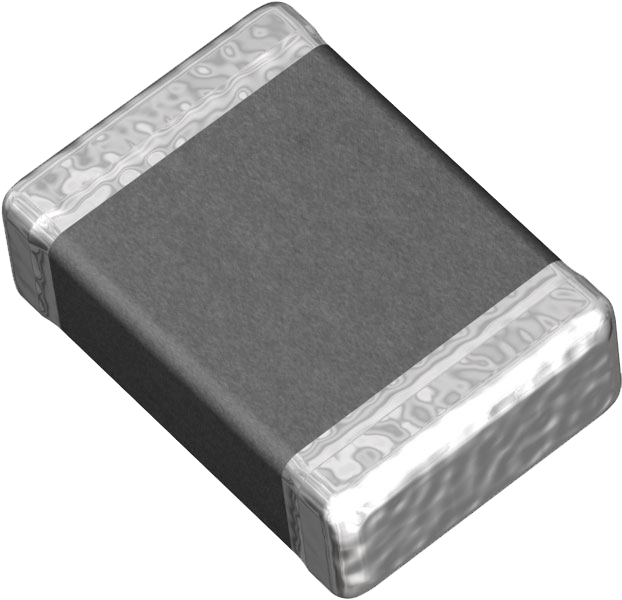Ferroxcube products
In line with worldwide environmental legislation, FERROXCUBE has taken measures to eliminate certain heavy metals and flame retardants. In Europe, the directives on Waste Electrical & Electronic Equipment (WEEE, 2002/96/EC), with an amendment on waste disposal financing (WEEE, 2003/108/EC) and Restriction on Hazardous Substances (RoHS, 2002/95/EC), with an amendment on polybrominated diphenyl ethers (PBDE, 2003/11/EC), an exemption on decabromo diphenylether (DecaBDE, 2005/717/EC), the annulment of the latter by the European Court of Justice (DecaBDE, ECJ) and maximum concentration limits (RoHS, 2005/618/EC), required electronic components to be free of these substances from 1st of July 2006 on. It concerns : lead (Pb), mercury (Hg), cadmium (Cd), hexavalent chromium (Cr VI), polybrominated biphenyls (PBB) and polybrominated diphenyl ethers (PBDE). With the program to eliminate lead from terminals (see right column on this page), FERROXCUBE complies with the RoHS regulations, including the DecaBDE restriction. Additionally, FERROXCUBE complies with the perfluoro octane sulfonate restriction (PFOS, 2006/122/EC), which is formally an amendment on the older regulation 76/769/EEC. Some products still have a version with SnPb plating, because certain market sectors and applications are exempt from RoHS regulations, e.g. equipment used in military applications. They are also maintained for customers in non-RoHS countries who don't want to switch.
Ferroxcube RoHS declaration
Date of release: Febr '05
![]() DOC file [77 KB]
DOC file [77 KB]
Outside Europe
Similar legislation has been prepared in China, under the name of Regulation for Pollution Control of Electronics Products (RPCEP), to comply with RoHS and WTO regulations (entry into force 1 March 2007). In many cases, this will simply require compliance with RoHS. Legislation has also been prepared in other places like South Korea (entry into force 1 July 2007) and California (entry into force January 2007).
Maximum concentration values
Total avoidance of hazardous substances down to 0% level is in practice technically impossible because traces of these occur almost everywhere. Article 5 of the RoHS directive states that maximum concentration values (MCV) will be established. There is now a definitive decision from the European Commission for these values (2005/618/EC):
Date of release: August '05
![]() PDF file [31 KB]
PDF file [31 KB]
FERROXCUBE products comply well with these values.
Additional information
Useful links on WEEE / RoHS issues are :
In line with worldwide lead-free legislation, FERROXCUBE has introduced lead-free plating on all of our formerly tin/lead containing products. The transition applies to accessories (coilformers for all core ranges & earth clips), wire-wound cores (through-hole & SMD), as well as multilayer suppressors and inductors. In Europe, the directives on Waste Electrical & Electronic Equipment (WEEE, 2002/96/EC) and Restriction on Hazardous Substances (RoHS, 2002/95/EC) required electronic components to be lead-free from 1st of July 2006 on. Comparable legislation has been prepared in other parts of the world, including China. Some products still have a version with SnPb plating, because certain market sectors and applications are exempt from RoHS regulations, e.g. equipment used in military applications. They are also maintained for customers in non-RoHS countries who don't want to switch.
We have chosen pure tin as the plating standard to replace the lead/tin plating in current products. It is 100% compatible with any existing leaded soldering equipment and does not require major change of production method. The top temperature for lead-free solder materials is however higher than for tin/lead solder. Apart from the plating, the products are identical to the corresponding lead-free products. Lead-free plating offers commercial and environmental advantages without any cost implications on the price of products supplied by FERROXCUBE.
Status information
Accessories
Single accessory items have been converted at once. Mostly, leaded and lead-free products did not exist together. Some lead-free versions got a new code number and a type description with Z at the end, but the recent ones did not change code number or description.
The packing mentions the lead-free status. Mostly, the label mentions : lead-free. Sometimes, there is an extra sticker (round, green border, crossed Pb symbol).
Wire-wound ferrites &
Multilayer inductors / suppressors
Multilayers were already lead-free. Wire-wound ferrites have been converted step-wise. Some have a leaded and a lead-free version. The lead-free version got a new code number and a type description with Z at the end. The label mentions : Pb Free - RoHS 2002/95/EC.
Recommended soldering profiles
Due to the higher melting point of lead-free solder materials like pure tin (Sn) or tin/silver/copper (SnAgCu), top temperature for soldering has to be increased when switching over from tin/lead (SnPb). A lot of study has been done on the corresponding soldering profiles. See the JEDEC proposal J-STD-020C, latest version on JEDEC and the IEC standard IEC 61760-1, latest version on IEC.
For our core sets + coilformers & wire-wound ferrites we recommend the following curve for wired products. The top temperature 260 °C applies to wire-wound ferrites and small accessories, 245 °C applies to larger accessories. For multilayer inductors / suppressors we recommend the following curve for metallized products. These have a shorter profile to prevent leaching of the terminals.
For additional information, please contact our sales organisation :



